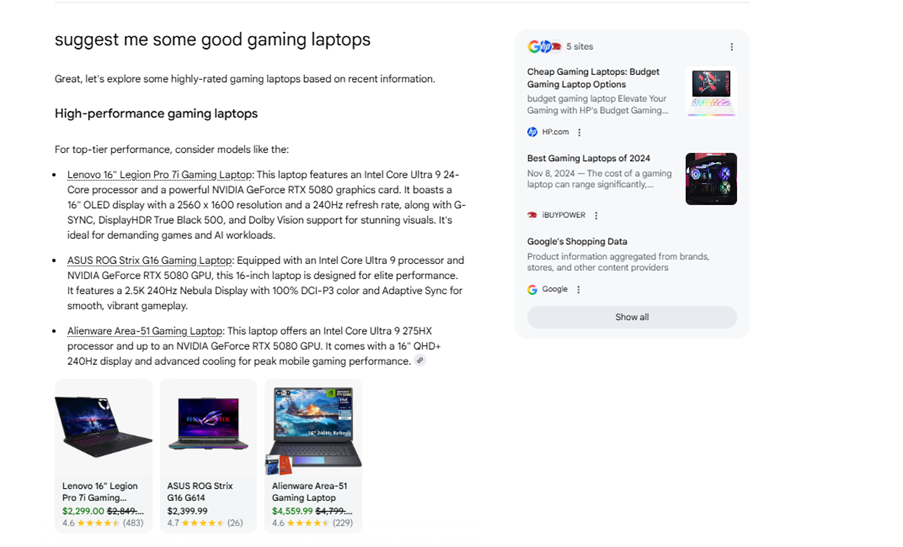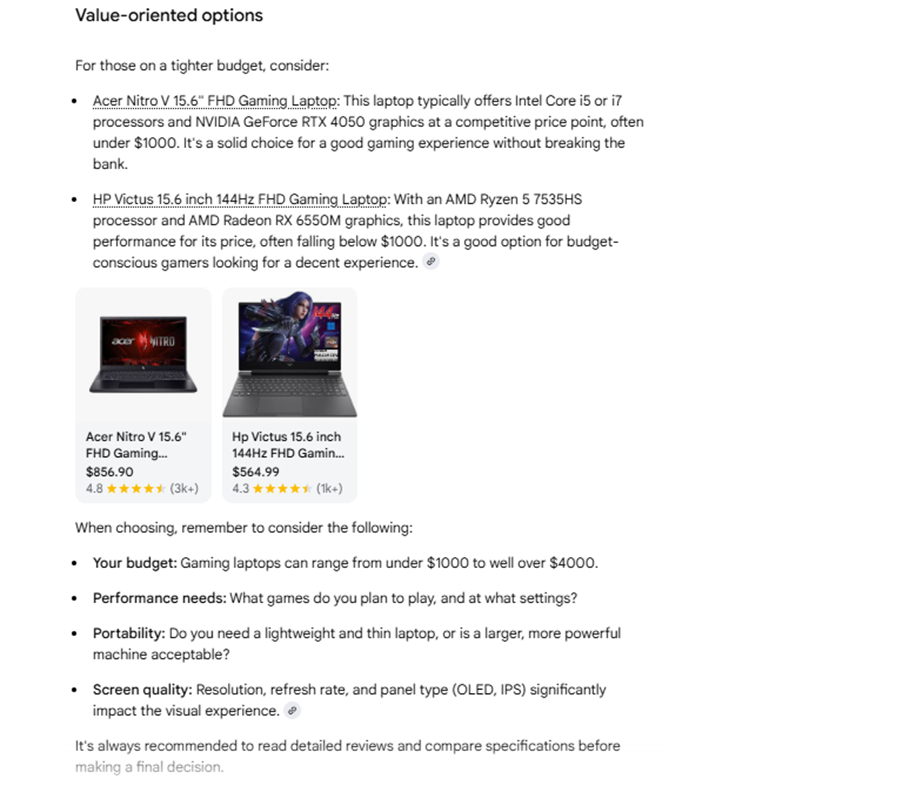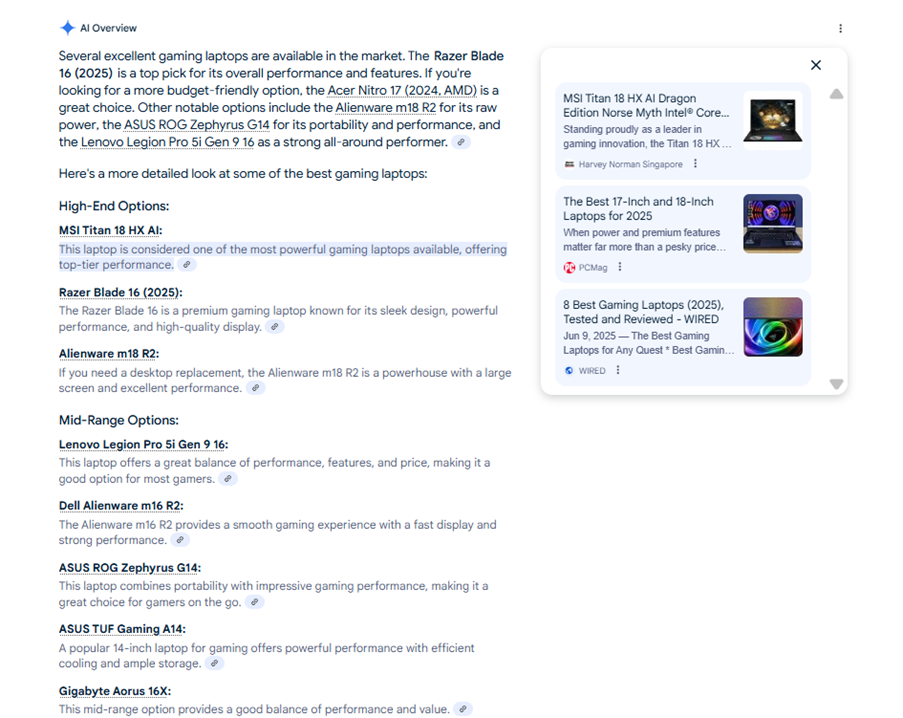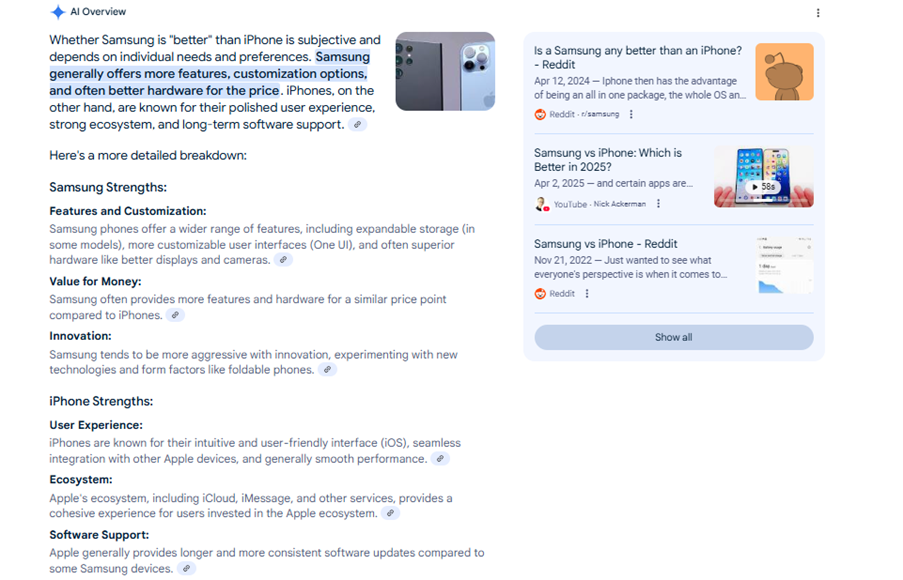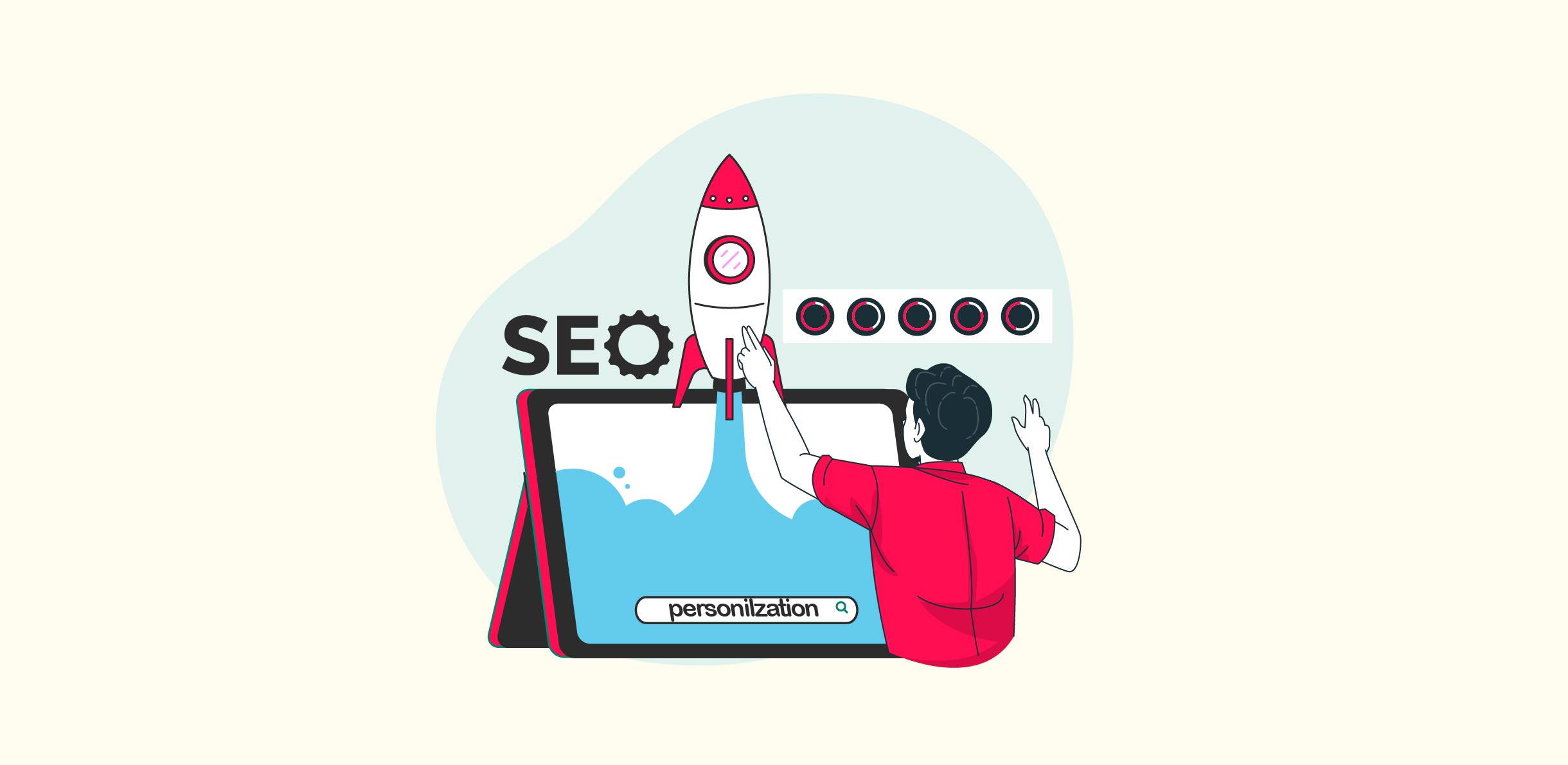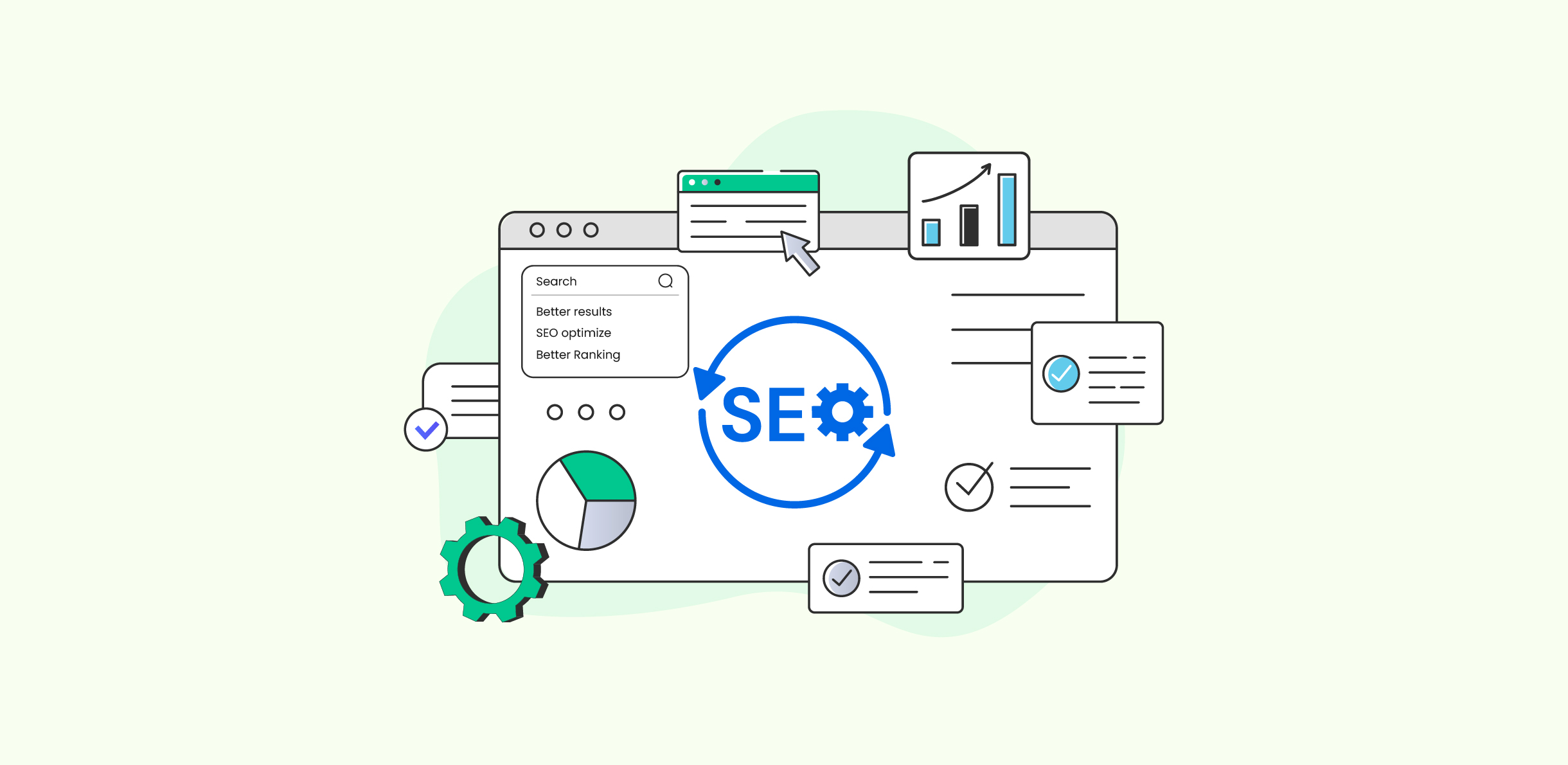With the onset of AI in Search, we have come across novel LLM engines, features, and an incredible assortment of tools. And of course, the recent addition is none other than the AI mode along with fan-out Query in Google Search.
The rollout of this reasoning-driven model in the search behemoth has led to one of the major AI milestones, but simultaneously has also started another discourse that focuses on the good, bad, the ugly, and everything in between.
In this article, we’ll talk about a range of things, like what is AI mode, how does it work, the introduction of Fan-out query and how it fits in this whole scenario, how SEO is seen in the different light after the arrival of AI mode, in what ways is it different than the traditional search and other interesting stuff too. So, without further ado, let’s begin!
What is AI Mode
So the question pops up: Is AI mode the AI Overviews repackaged? Nope, it’s not.
When it comes to AI mode, we can say it’s another version of AI Overviews, but stronger, better, and most importantly, lengthier with its own designated space and button.
When you type in any query in the AI mode search bar, it returns a super comprehensive response that not only provides an answer but also includes snippets of supplementary information that may help you understand the whole thing better. Take note that no other AI search feature is capable of doing this right now, so some strong points go to AI mode for that.
According to Google, this new AI mode offers advanced model capabilities and makes best-in-class information systems accessible to all users. The new addition to the Search interprets intent and answers queries with high-quality content, knowledge graph, real-time sources, stories, and also shopping data for billions of products across the Search.
With the launch of AI mode, Google’s vision was to expand the role of AI Overviews and provide more of reasoning-driven summaries, comparisons, conversions, and also deliver a personalized task-oriented assistant experience.
Powered by Gemini, this AI Mode offers the following characteristics:
- It delivers data-packed information generated from the reasoning models that compile information from a range of contextually and semantically related documents
- According to the latest observation, it has a different set of websites mentioned compared to the AI Overviews results
- It depicts a super dynamic behavior at this point, meaning it pops up different answers for the same queries in the same regions, at different timings. The answers change even if the tab or browser is switched
- In one context, AI Mode reflects the zero-click searches of the traditional SERPs. And in this zero-click behavior, things work a little differently. Like here, being cited matters more than receiving clicks in some cases.
Okay, so now let’s spotlight the much-discussed discourse lately, which is none other than Query Fan-out. Let’s explore what it is about and what its connection is with the AI Mode.
What is Query Fan-out
In simple terms, Query Fan-out is an AI-powered search technique used by AI Mode and AI Overviews, where Google scours multiple related searches and compiles that information in a comprehensive and easy-to-understand response. So, we can say that this reasoning-driven model always comes up with the amalgamation of the semantically relevant searches, instead of just showing results for the single query the user typed in.
According to this Google document,
“Both AI Overviews and AI Mode may use a ‘query fan-out’ technique — issuing multiple related searches across subtopics and data sources — to develop a response.”
The document further explains that while the response to the query is being generated, the reasoning-driven AI modal searches and identifies a collection of supporting web pages to expand a list of helpful links associated with the said query to provide us with a better understanding of the response.
In another document, it provides more certainty by saying,
“AI Mode uses a ‘query fan-out’ technique, issuing multiple related searches concurrently across subtopics and multiple data sources and then brings those results together to provide an easy-to-understand response.”
At the Google I/O event, one of the Google engineers shared with Marie Haynes that a special version of Gemini is used to generate the query fan-out.
Indeed, this leads us to the new horizon of search and exploration opportunities, giving us more depth and breadth of data and information as compared to traditional search.
While doing research for this blog and closely studying all the developments since AI mode rollout, we came across Aleyda’s blog, which has some valuable insights related to AI mode’s Query Fan-out.
It mentioned that fan-out doesn’t trigger on every query, like a simple query such as ‘Capital of Spain’, might not trigger the extensive fan-out. Whereas other complex queries, such as ‘how to optimize website performance’, would activate the fan-out process extensively.
In the same way, it is elaborated that fan-out functions through covering many facets of the original query. For instance, for the query,
“Could you suggest Bluetooth headphones with a comfortable over-ear design and a long-lasting battery?”,
Fan-out will recognize the core facets mentioned in the query like ‘design’ (over-ear, comfortable), ‘technology’ (Bluetooth). In addition to this, AI mode further fans out to the sub queries, like user reviews, expert reviews, comparisons, and other technical features.
Let’s do some tests here to get a better understanding of it!
Test 1
We ran some simple tests to analyze the differences in responses of AI Mode and AI Overviews.
For our first query, ‘Suggest me some good gaming laptops’, AI Mode classified options into three tiers. High performance, mid-range, and portable, assigning the corresponding value to each. In every tier, it showcasedthe apt details of specs and why it is a good option to pick. And most importantly, every option was directly linked to the product listing page, so you can add it to your cart or place a direct order. It seems that, depending on the purchase-heavy intent of this query, Google extracted results from a Shopping Graph to give us a more helpful experience in the AI mode. Also, in the end, it displays some buying tips for making a suitable purchase.
While in the AI Overviews, the showcased options don’t describe specs in detail, giving you incomplete information. Along with that, the headline links lead you further to the additional Google searches. Meanwhile, the linked results on the side have more review webpages rather than the product listing.
Test 2
To our second query, ‘is Samsung better than Iphone?’, AI Mode’s response was comprehensive and explanatory. It discussed the major characteristics for both devices and how they differ from each other, mainly garnering information from comparison pages and concluding the discourse with that it comes down to one’s preferences in features and design.
On AI Overviews, the response has two sections dedicated to Samsung and iPhone strengths. Each explains a unique set of characteristics that come with the device, but misses out on some core traits like camera quality and design. Similar to the previous query, the response isn’t comprehensive.
Impact on Search Behavior
There’s no doubt that AI Mode has brought a major shift to the search. Although this change was inevitable after AI Overviews rolled out, the launch still surprised general users and some people in the SEO community. Because, as a matter of fact, what we’re observing right now isn’t just another change in how we search on Google, but it can also snowball into a domino effect, triggering a series of other interrelated changes too.
As AI mode has still not launched in other regions, it’s still hard to predict its impact on user behavior or search patterns in their entirety. But if we look at it from the surface level, there are some obvious observations that don’t go unnoticed.
For instance, if we look at it from a users’ perspective, the tool brings a plethora of insights in no time and also abridges the research cycle that can definitely be prolonged without using AI mode. Whether it’s product comparison, making a purchase, or finding the right recommendation, the AI mode makes it easy for you to find the right information in mere seconds.
Before that, if the user was taking a standard Google search route, they would have to do thorough research to find the right products, skim through multiple sources, scroll online forums to read honest reviews, narrow down their options depending on their requirements and budgets, and then make a well-thought-out decision. So, now, even if AI mode won’t be making the buying decisions for you (maybe in the next 5 years, who knows), it surely is simplifying the research for the audience and taking the grunt work out.
What does it mean for SEO?
For many years, we have discussed, implemented, and learnt many things when it comes to SEO.
The significance of matching search intent, prioritizing creating helpful content, the power that PageRank carries, strong brand signals further strengthen your rankings, and a bundle of other things too.
We learnt what really moves the needle, the factors that are conducive to making your site and content rank, and also realized the truth that no matter how much you do everything right every time, you can still be affected by the next core update or the algorithms can choose to rank you down no matter what. Some things are out of your control in this SEO scenario, and that’s okay. We’ve still got this!
Now, the novel Query Fan-out has slightly changed the quintessential SEO optimization model. A single query running through the AI engine moves facets and subqueries components, reasoning bolts and nuts, and gives us more nuanced summaries, which no other search feature is capable of doing at the moment.
That’s exactly what was highlighted by Dan Taylor in this article.
“For years, SEO has been driven by simplification.
Keyword → Content → Ranking
But the Query Fan-Out radically changes that model. A single prompt becomes a swarm of related questions, and the AI decides which bits of content answer which parts.”
So, what does this mean for SEO? Well, this means,
- A page or site not ranking in traditional SERPs can pop up in AI mode
- If a certain content passage or a section on a page matches the query accurately, then it will show up in the LLM-generated response no matter if it is optimized for a certain keyword or not.
- Covering micro intents in your content is essential now, more so when an excerpt from the page can rank for a major query or subqueries.
- It’s high time that SEOs need to move beyond just optimizing for the list of keywords and analyzing the surface-level search intent. There’s a need to develop a wholesome understanding of the search intent, how a single query branches out to micro-intents and sub-queries
- It would be helpful to map out the entire user journey and try to answer all the questions one could have around the topic
- Topical authority and content clusters matter tremendously more now for sites and businesses, as they cover the subject in a comprehensive manner, answer questions, and include information relevant to all facets.
- With the incredible conversational capabilities of AI mode, there’s an apparent need to design and craft content in a way that addresses sub-queries and the core facets in their entirety. SEOs need to pivot instead of just focusing on ranking individual pages.
- With AI mode extracting information from a plethora of data points and scouring the web for relevant information, there’s a high need to pay attention to content placement at the right places and be a part of important discourse, so that you’re seen and noticed by AI mode when it fans out.
The imminent impact on Search and search behavior calls for the need to have a custom tool. The one that lets us know how much traffic we’re getting from the new paradigm.
In this article, Glenn Gabe highlighted the need for having an AI Search Console to have transparency, break down the complex AI-referral traffic data, and access pristine information for what queries are triggering your AI rankings and for what pages. And, honestly, this will bring huge clarity to the SEO community if this comes true.
AI Mode is nothing but fascinating, yet it calls for a deeper understanding of how it works and what triggers it to fan out to the other relevant searches, and how. This will allow SEOs to develop a better understanding of AI mode and plan an effective SEO strategy accordingly.
How do we optimize for Query Fan-out in AI Mode
Now we come down to the important question of how to optimize for fan-out queries for AI mode optimization.
Well, according to Google, you can stick to the same set of classic SEO practices for AI responses that you apply for traditional SERPs. In the section named ‘How to appear in AI features’, it was mentioned that,
“You can apply the same foundational SEO best practices for AI features as you do for Google Search overall: making sure the page meets the technical requirements for Google Search, following Search policies, and focusing on the key best practices, such as creating helpful, reliable, people-first content.”
Furthermore, it also explains the technical requirements for popping up in AI searches. It says that a page needs to be indexed and eligible to be shown in Google search with a snippet, and apart from this, there are no additional technical requirements.
While doing research for this blog, we read many insightful pieces to cement our understanding of the topic, find answers to thought-provoking questions, and learn how to approach this reasoning-driven AI model. And as the Query Fan-out and AI mode are still comparatively new concepts, it’s better to turn to the leading industry voices to have access to the meaningful information and test them out. In our research, we found some helpful strategies shared by authoritative SEO influencers, and some of them are shared and linked below.
In Marie’s article, it was highlighted that with the arrival of Query fan-out, queries have ultimately turned into conversations, and that makes it difficult to track which set of pages is shown for clients’ queries.
And when it comes to optimizing for AI mode, we need to perform a series of tests and see the results. Also, most probably, to show up in LLM-generated responses, you need to put an effort into being a reliable go-to source or authority on the particular topic, crafting comprehensive content hubs that cover all topic facets, and answering the questions your audience has.
Similarly, Aleyda in this helpful piece ,pointed out that we need to have an ‘answer a facet’ mentality in our content to complement fan-out queries.
It refers to the practice of not only covering the micro intent in an absolute manner, but also having the macroscopic analysis of your piece and figuring out what more queries a user is likely to explore around that topic. Having dedicated sections related to each subtopic can signal to the AI mode that you have the information that matches a certain query, fulfilling the goal of appearing in AI responses.
IPull (Michael King) in this recent article sheds light on the AI mode development, Query Fan-out technique, and more stuff.
In one of the sections of this comprehensive piece, it is mentioned that there’s a need to adopt different ways to structure content so that it can pass through the reasoning layers. The section discussed that the content is supposed to fit the reasoning target, be fan-out compatible by being aligned with subqueries, be citation friendly, and also have the categorical composition.
On the contrary, there’s a term going around in different spaces, AI SEO. But if you take a closer look at it you’ll find out the core principles remain the same as traditional SEO we have had in place for decades. And this is exactly what David Quaid explained in this article.
In a section of Backlinks and Brand Mentions, it is explained that despite the shifting focus from backlinks to brand mentions and authority signals, the principle remains the same. “Being a recognized and trusted entity in your field is a powerful ranking factor.”
And it seems like it will always be.
With the AI wave on the rise, SEOs and marketers need to align their growth goals, cause there’s no point in working in silos. Teams need to make sure their products and brands secure spaces with their unique selling points in the comparison charts, reviews, and high-quality content pieces for AI to figure it out and highlight it as the coveted solution for the problems and concerns the target audience is facing.
To put it in a metaphoric way, Query Fan out and AI mode are somewhat new arcs in the evolving lore of SEO.
Maybe we’re just at the beginning of the AI mode optimization, and there’s a whole lot of work to be done. Analyses, case studies, and multifaceted ways and strategies to optimize for query fanout. In addition, we still have to figure out our way around the super dynamic nature of the AI mode.
Albeit we have our opinions, theories, and educated takeaways, we’re all still figuring it out. Along with the developments, new observations, and discussions happening in the community, just like Ann Smarty said over here!
Conclusion
With the advent of AI mode and the intricate concept of Query Fan-out, there are buzzwords thrown around, hallucinated ideas treated as fact, and it feels like new SEO terms keep popping up every day. There are AI SEO, GEO, AEO, and more like them.
But here’s the thing: despite all the chaos and disruption in organic search, the core SEO principles remain unchanged. Don’t believe anyone, online or in person, who tells you that the whole SEO makeup is likely to change. It’s not true. Yes, we have to adapt and rebuild our strategies to approach AI mode and to complement the Query Fan-out system. But that doesn’t mean SEO is dead, that it’s not going to work, or that we have to unlearn everything we’ve done over the years.
The key is to adapt, rearrange, prioritize, and keep learning. And honestly, all great SEOs and marketers have been doing that over the decades in the SEO realm.


